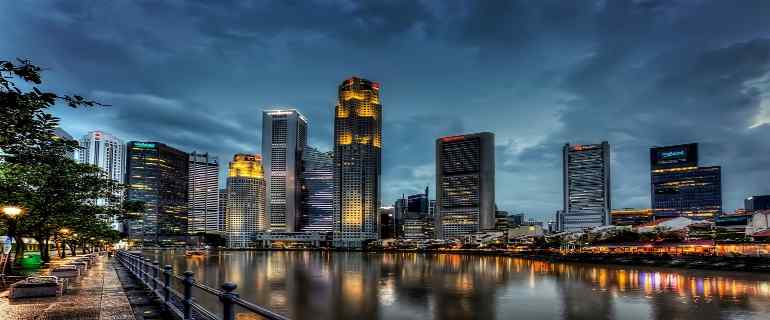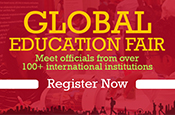The education system in Singapore is based on the British systems and puts a lot of emphasis on testing. Schools are ranked no how well students do on standardized tests. The government places a strong emphasis on practical skills such as science and mathematics. Singapore students usually excell in international tests. Singapore puts a lot of emphasis on education because it is widely believed that people are its only resource and these people have to exceptional if Singapore is to survive and prosper. The city-state thrives on innovation and gears education towards the latest needs of society and economic prosperity. Despite the criticism leveled against it for being regimented and test-oriented, the Singapore education system is quite creative. Singaporean teacher consistently rank high in teaching surveys and are commended for their innovative teaching methods.
Asia One reported: “A nation with a scarcity of natural resources, Singapore has devoted much effort toward nurturing an elite citizenry based on a merit system. Examinations are held to screen excellent students when they are in fourth and sixth grades of primary school, fourth grade of secondary school and second grade of junior college. Parents are frantic, as the door to a university will almost certainly close if their children fail but one examination. Literacy: definition: age 15 and over can read and write total population: 92.5 percent; male: 96.6 percent; female: 88.6 percent (2000 census). 57.8 percent of Singaporeans have secondary school diplomas or even higher qualifications.
study law in singapore, uk universities in singapore, national university of singapore admissions, 1 year mba in singapore cost, local universities in singapore, singapore college list, insead executive mba fees, singapore institute of management ranking, nanyang university singapore, courses in singapore for foreigners, online mba, b schools in singapore, executive mba programs, mba in singapore eligibility, computer courses in singapore, nus mba part time, nus mba ranking, hotel management course in singapore, singapore technical university, best part time mba in singapore, mba programs, singapore institute of technology ranking, business courses singapore, singapore business school ranking, executive mba, sg university, singapore international school, manchester mba singapore, mba finance singapore, hotel management colleges in singapore, degree courses in singapore 1 year, part time mba, singapore management university mba ranking, james cook university singapore ranking, singapore uni, mba courses, best private university in singapore, singapore education ranking, executive mba rankings, mba degree, study master in singapore, why study in singapore, smu mba fees, singapore university scholarship, online business school, short courses in singapore for foreigners, singapore medical university, management colleges in singapore, best universities in singapore for mba, government universities in singapore masters in education singapore, one year mba, best executive mba programs, diploma courses in singapore for foreigners, mba correspondence, mba colleges, mba admission, national university of singapore postgraduate courses, singapur university, top mba schools in singapore, psychology courses in singapore, teaching jobs in singapore, studying in singapore for foreigners, mbbs in singapore for indian students, study abroad programs, polytechnics in singapore, 1 year mba, master of business administration singapore, study engineering in singapore, msc finance singapore, public universities in singapore, insead fees, private institutions in singapore, study in usa, mba finance, business school, mba scholarships, jobs in singapore for indians, postgraduate singapore, top universities in singapore for ms, bachelor degree in singapore, list of hotel management colleges in singapore, amity mba fees, top b schools in singapore, top 10 schools in singapore, study in australia, mba courses in singapore fees structure, jobs in singapore, private schools in singapore, singapore business university, cheap universities in singapore, engineering colleges in singapore for indian students, mba singapore part time cost, design school singapore, emba, masters in marketing singapore, medical course in singapore, mba, singapore university fees, smu singapore mba
Education expenditures: 3.3 percent of GDP (2012), country comparison to the world: 132 Public expenditures on education totaled 2.7 percent of the gross domestic product for school year 2004–5. In 1987 some 4 percent of the gross domestic product ( GDP) was devoted to education. The government's goal for the 1990s was to increase spending to 6 percent of GDP, which would match the levels of Japan and the United States.[Source: Library of Congress, 2006]


